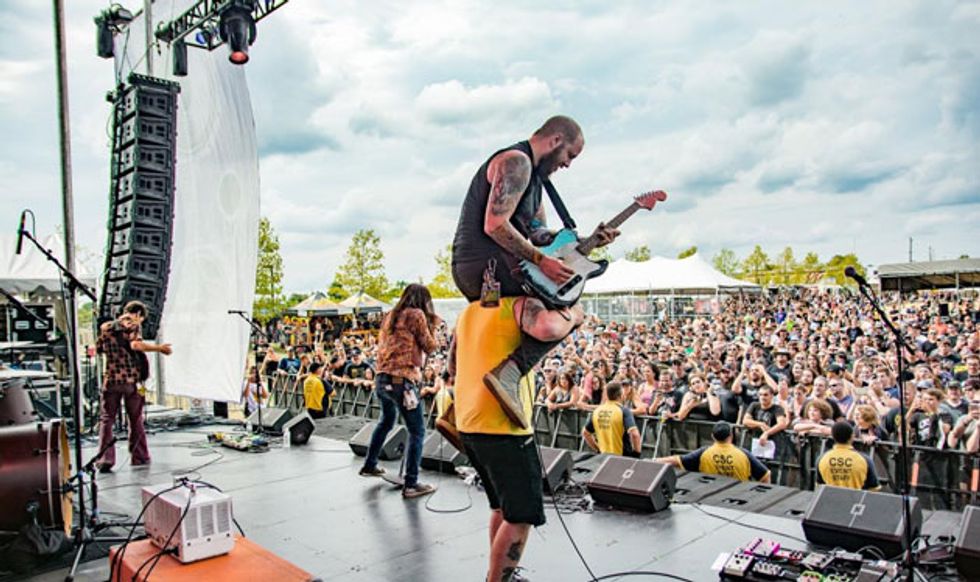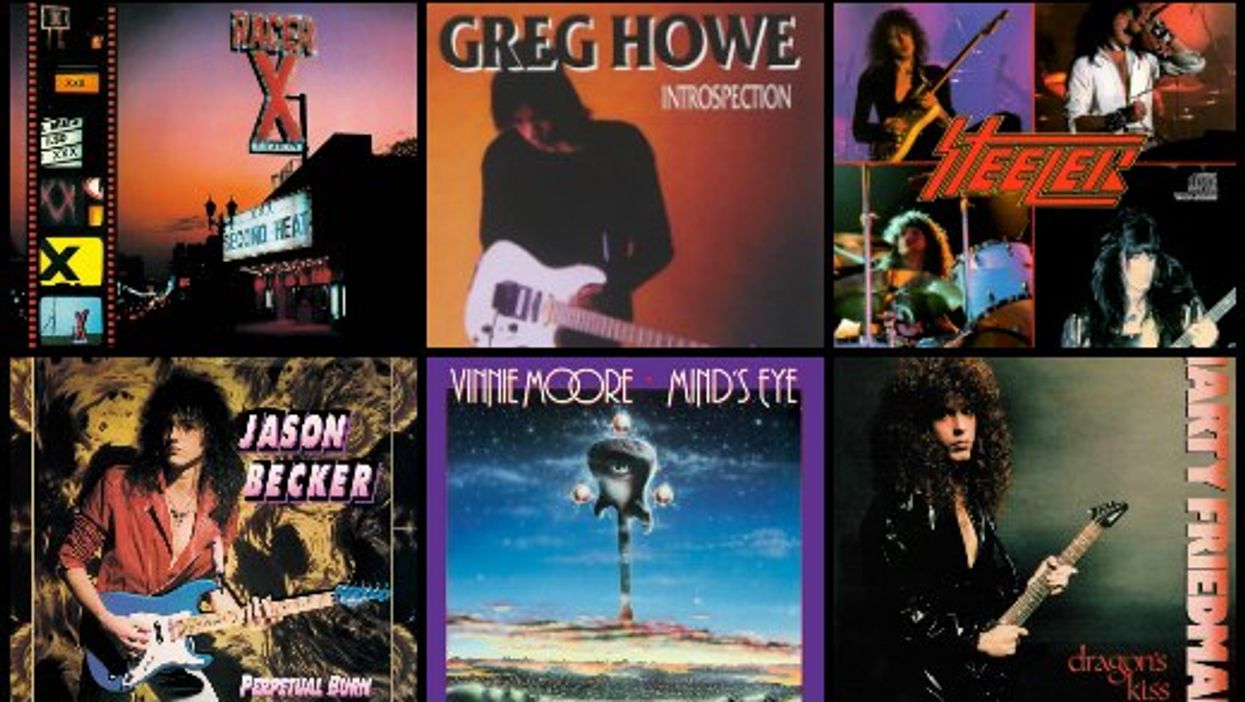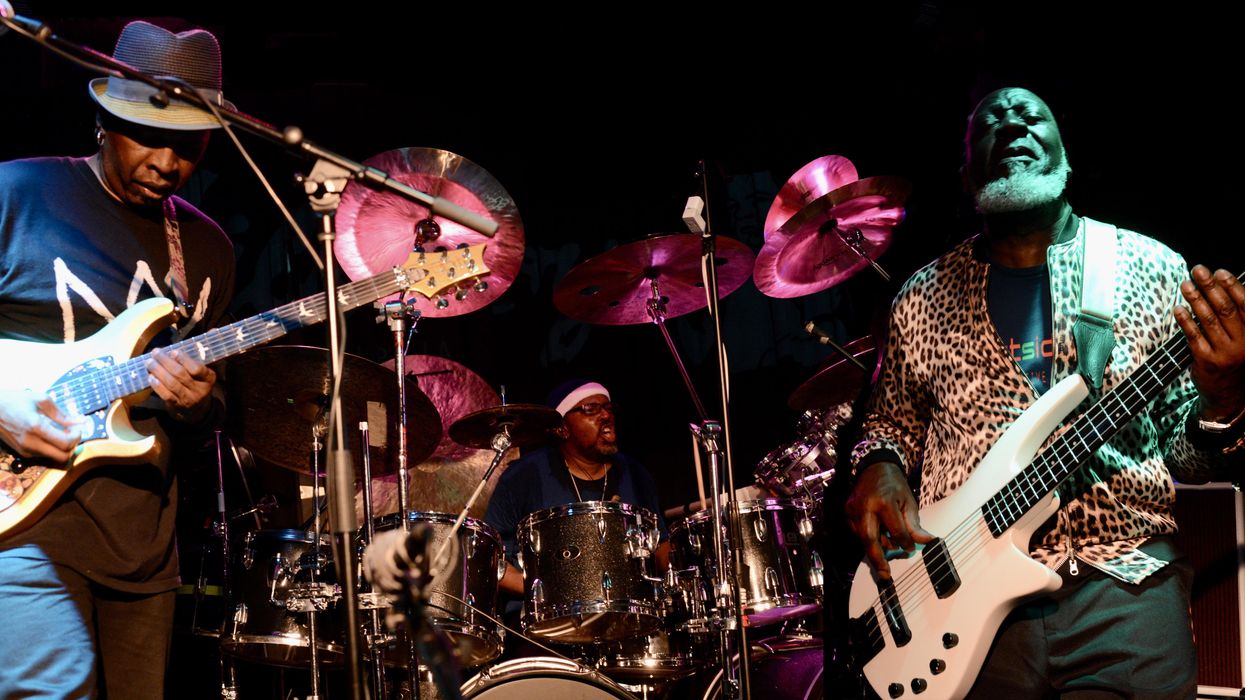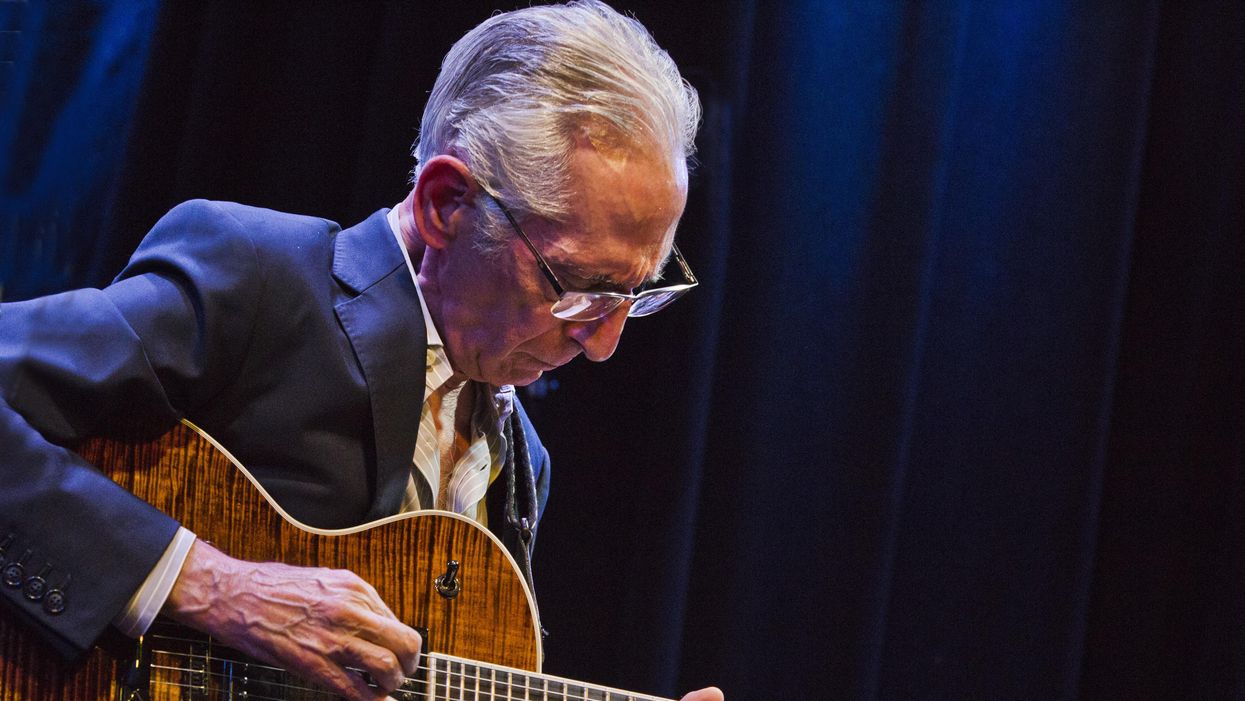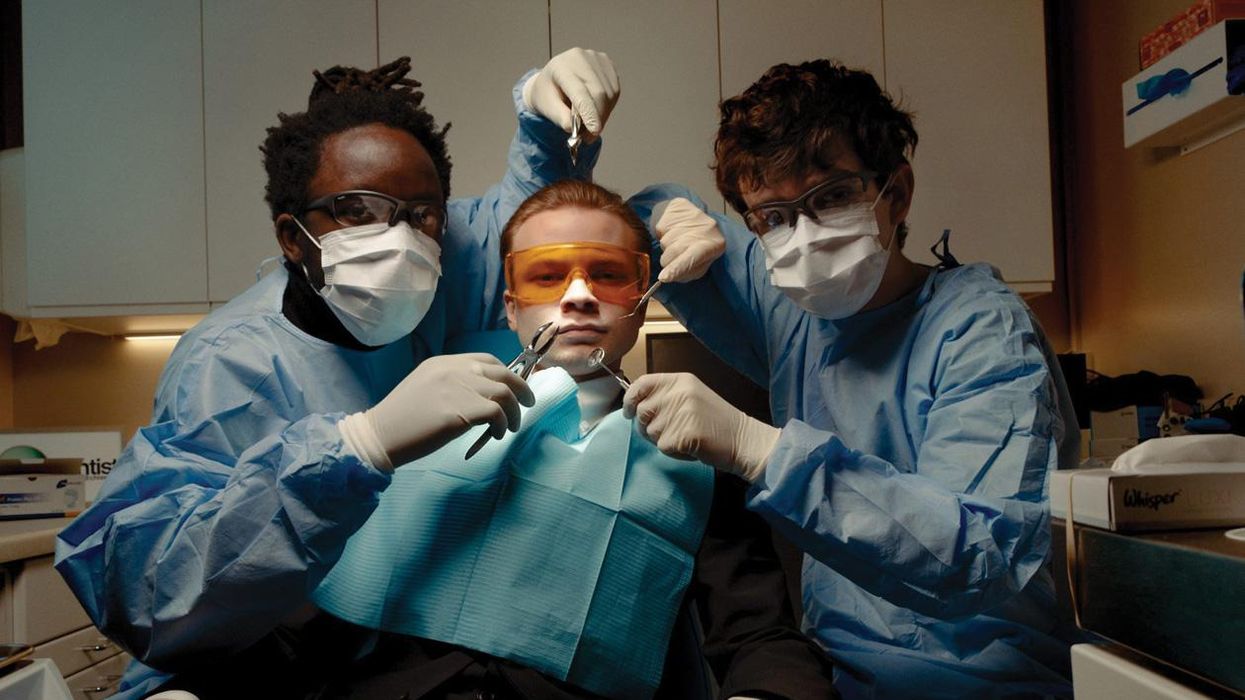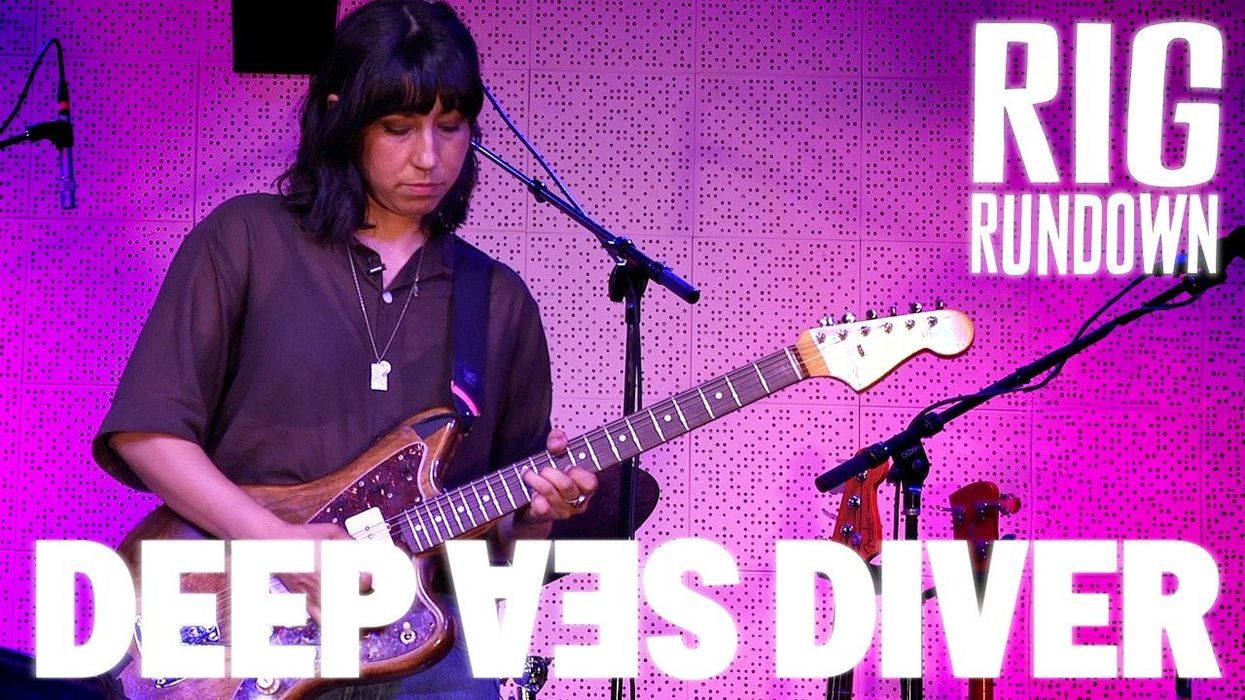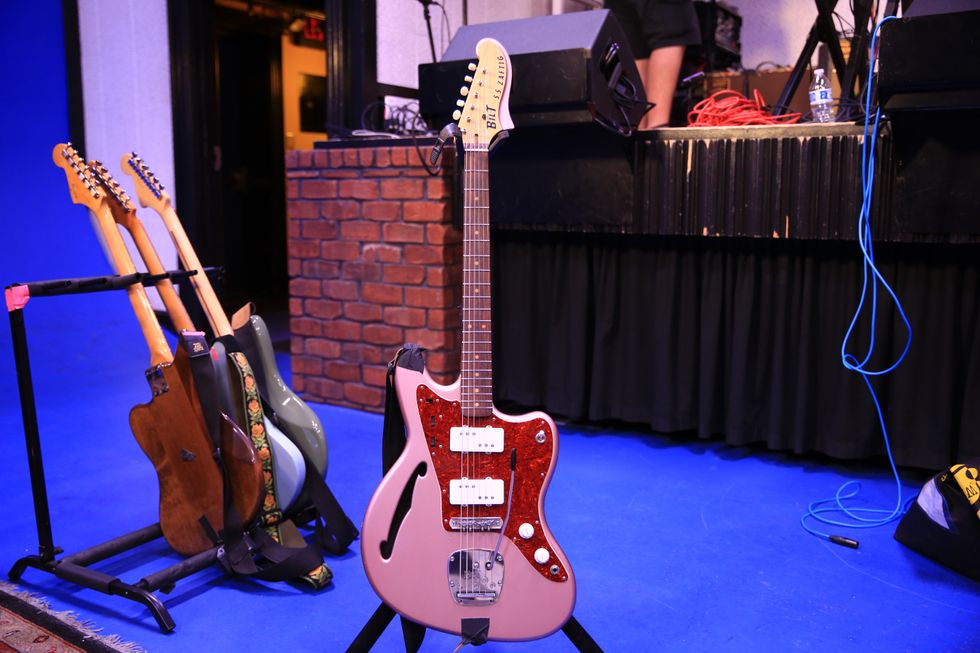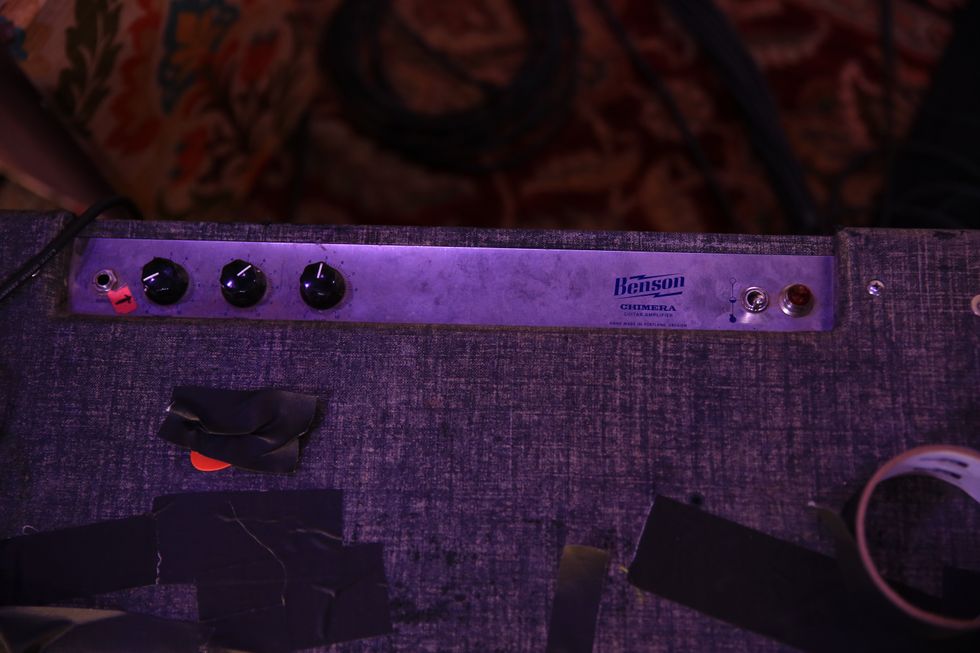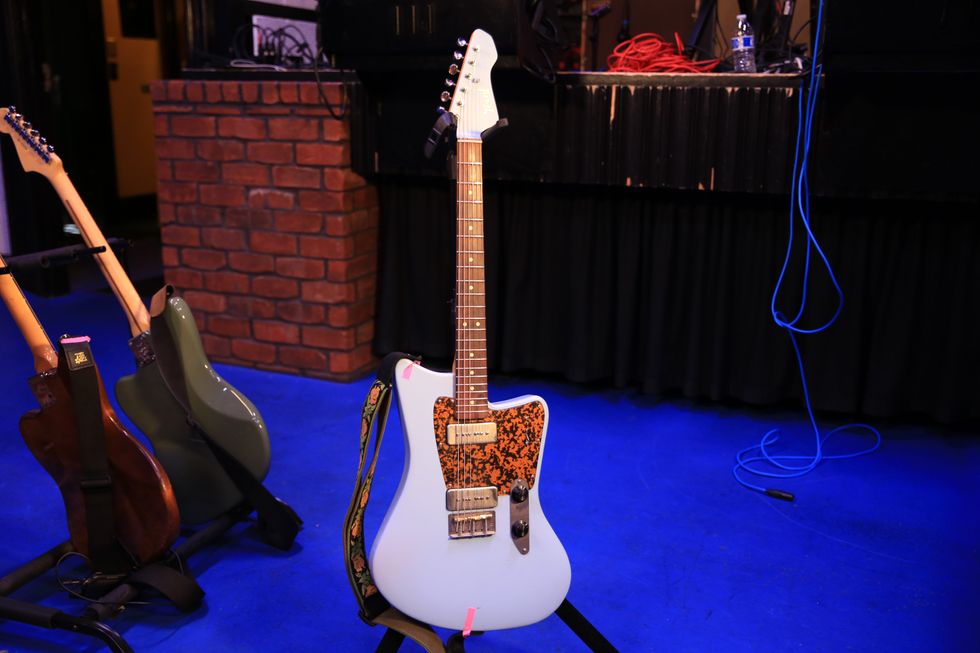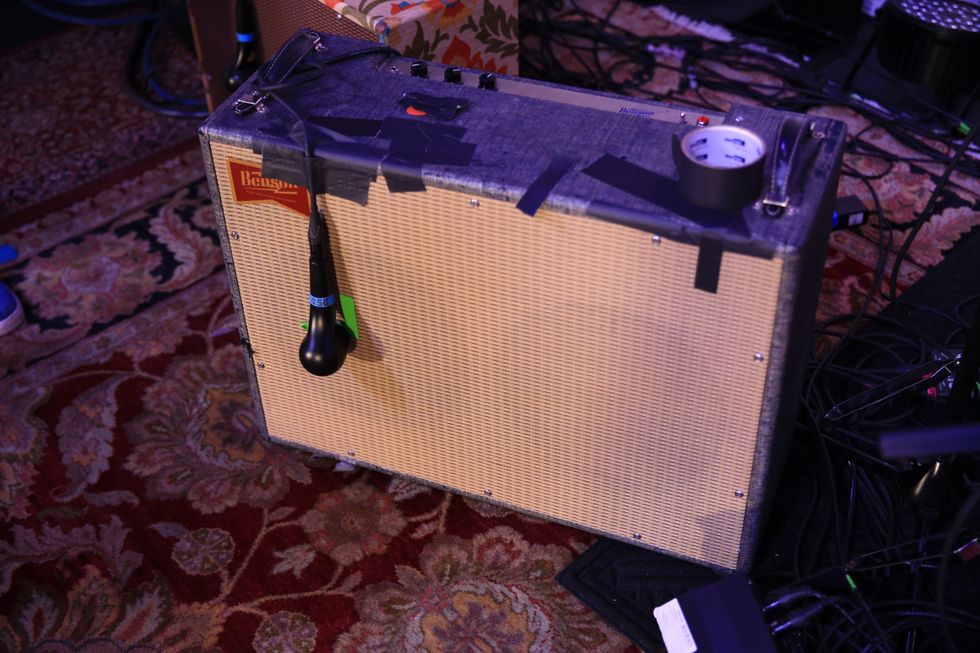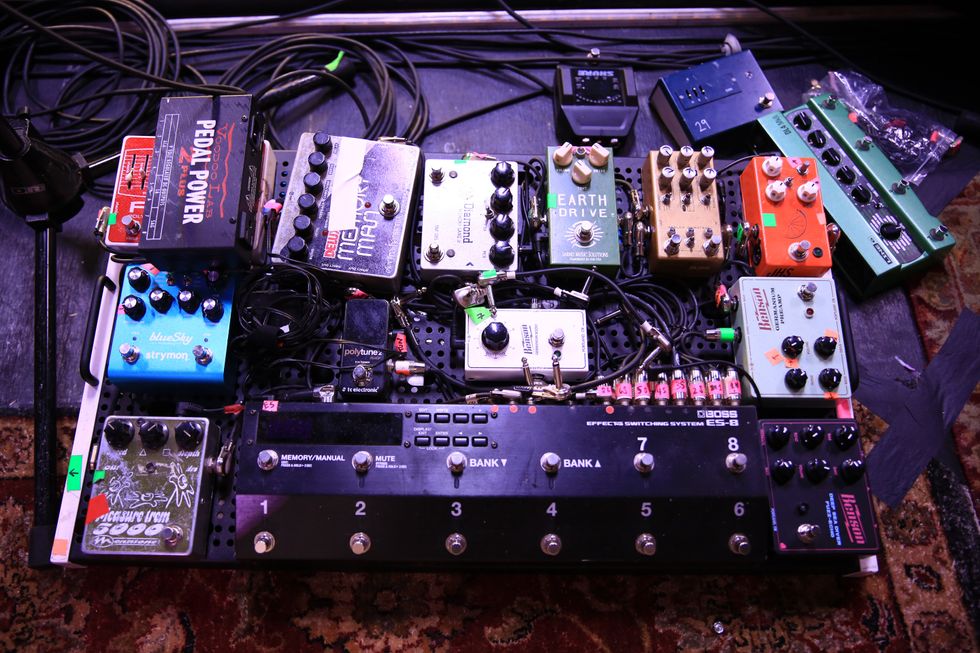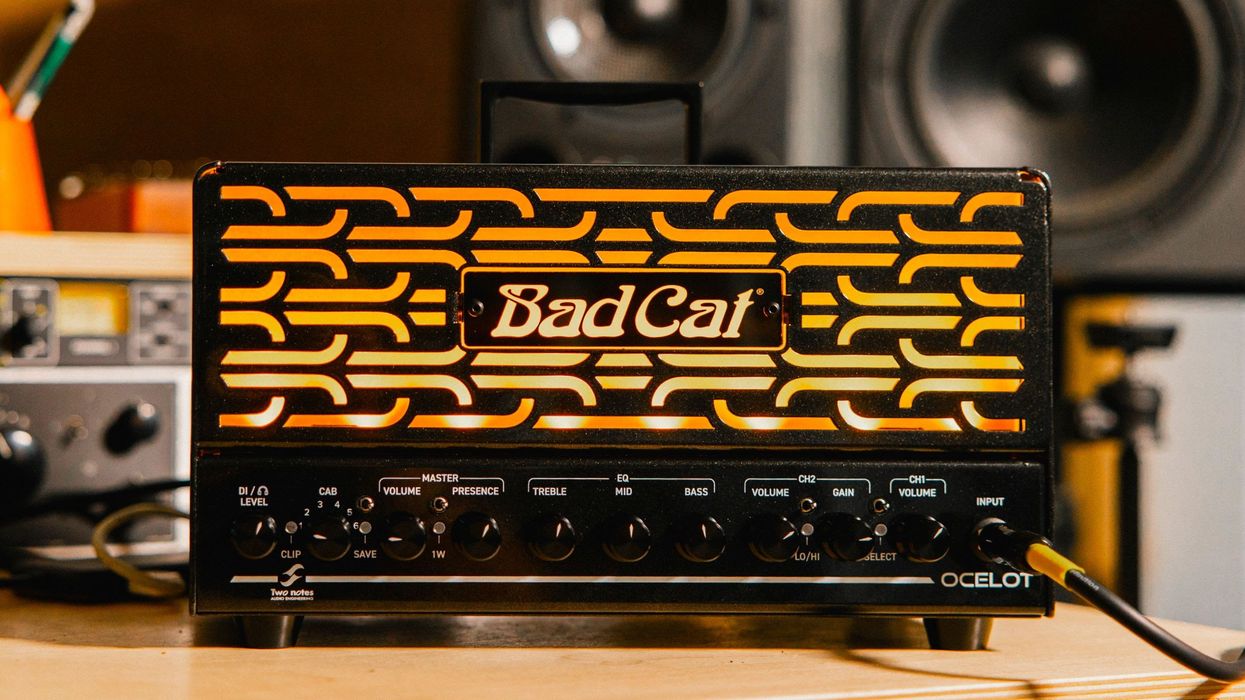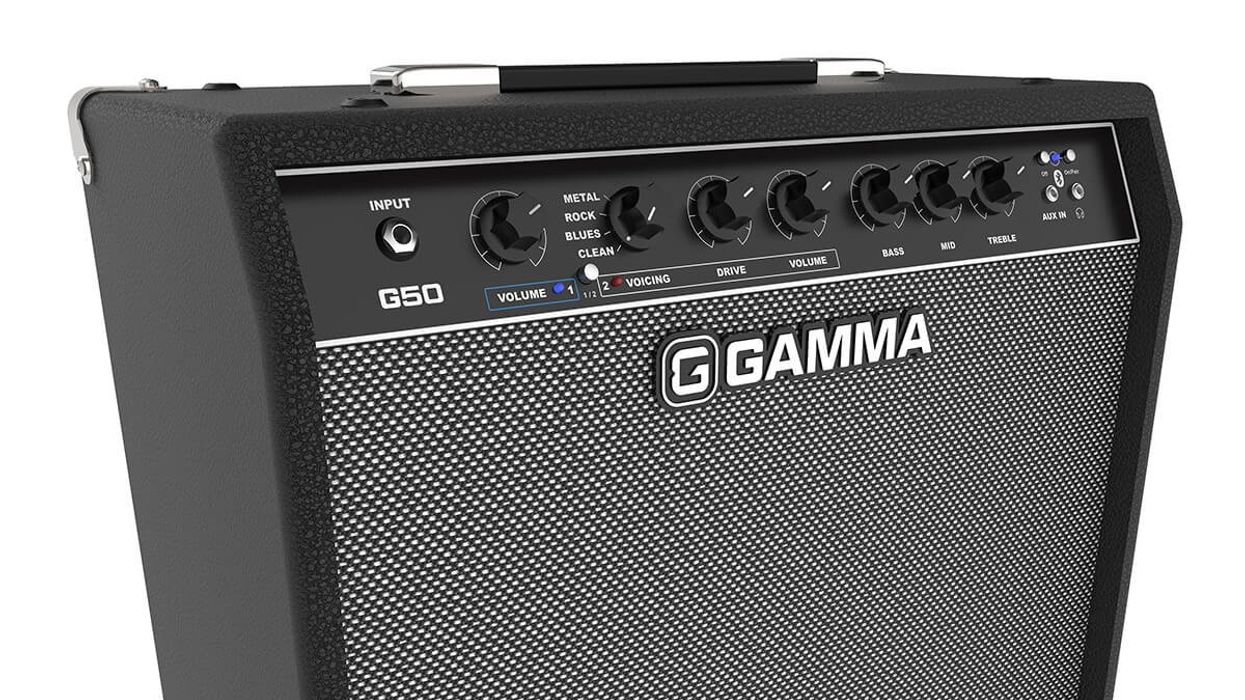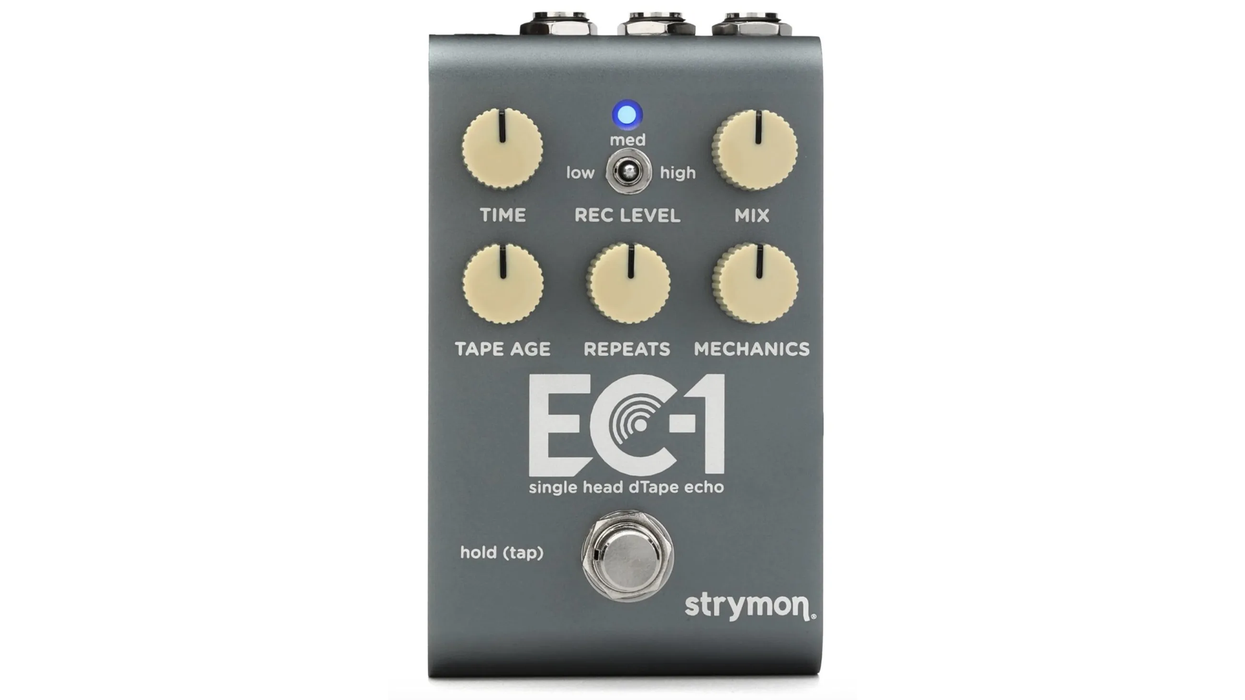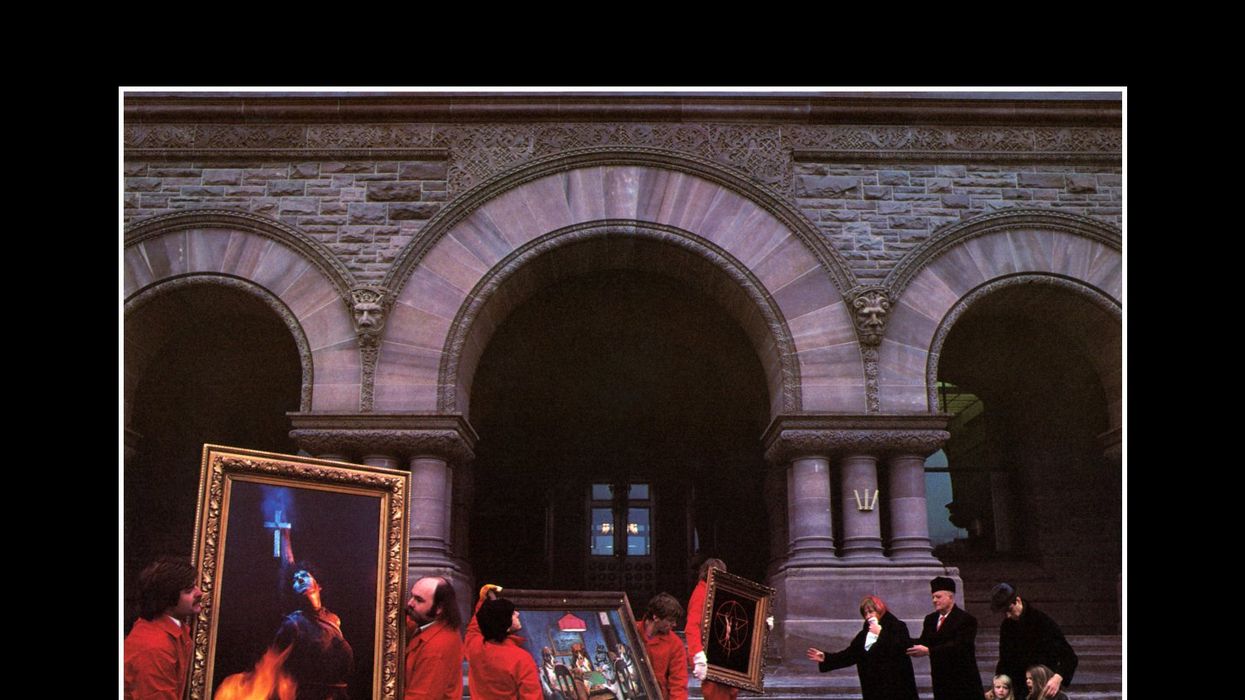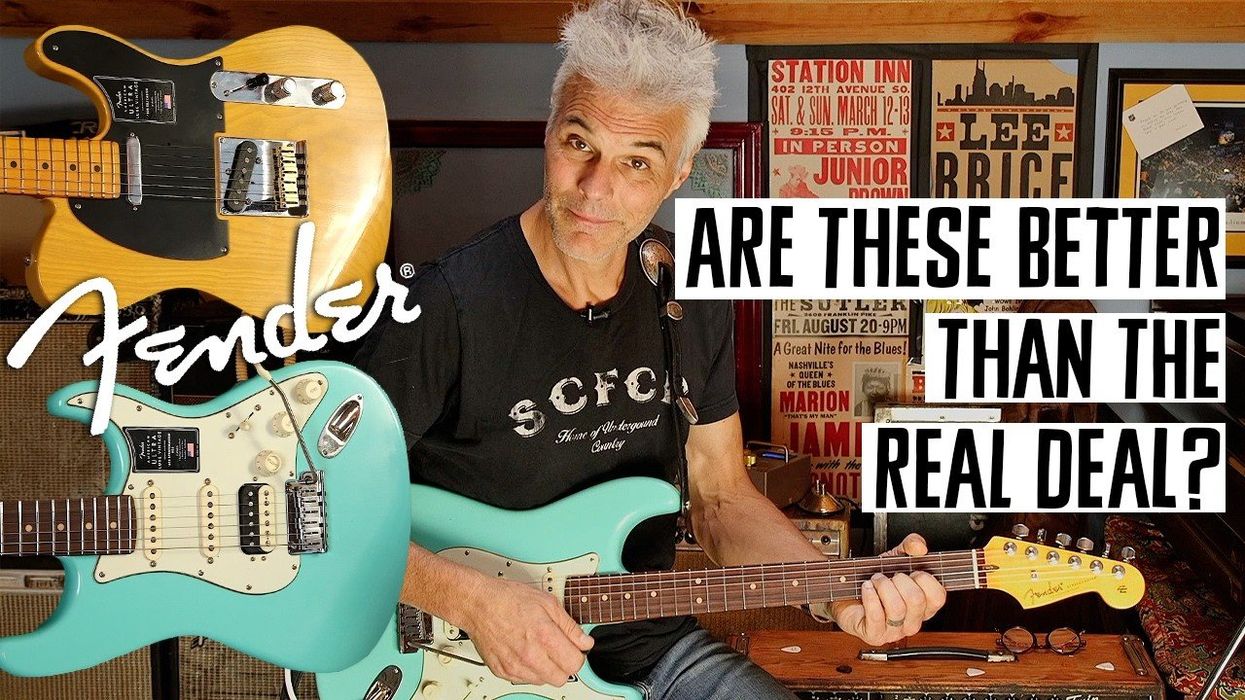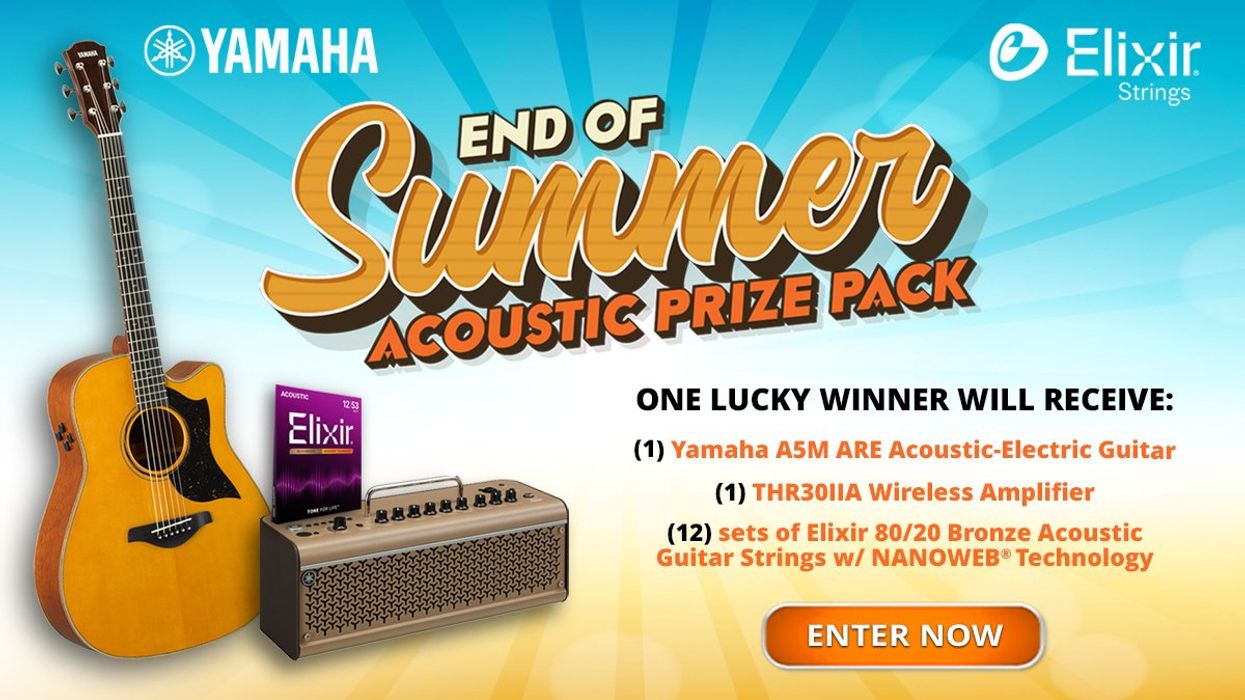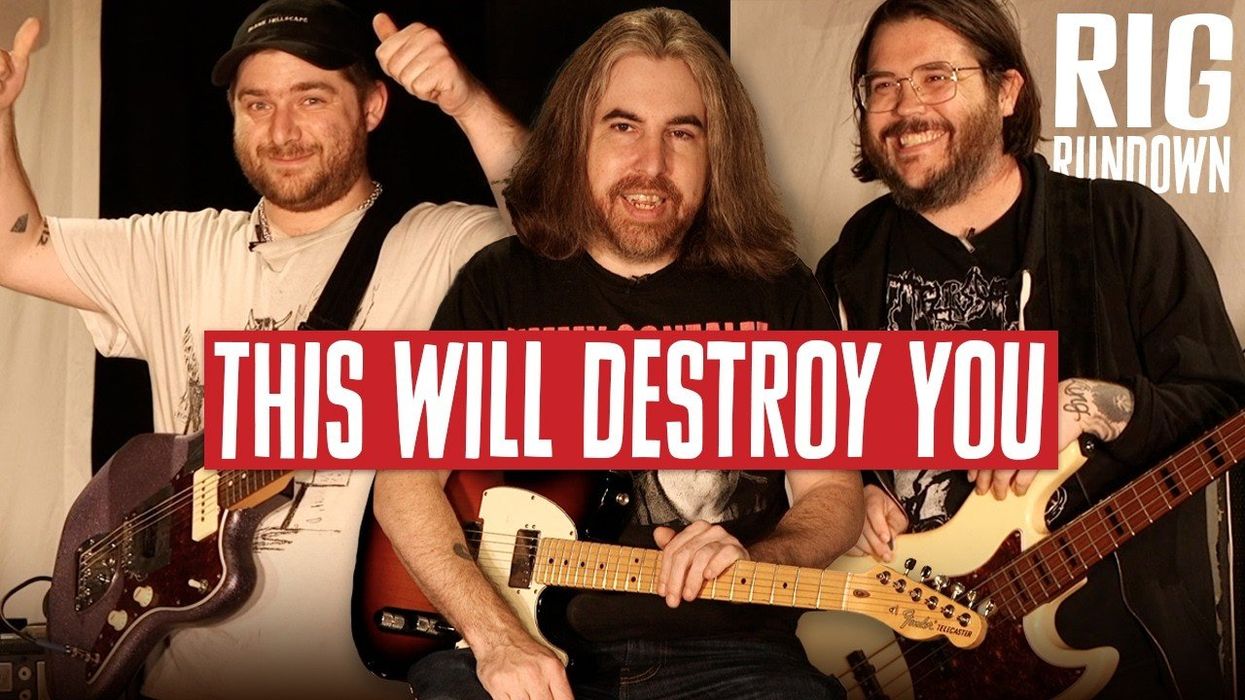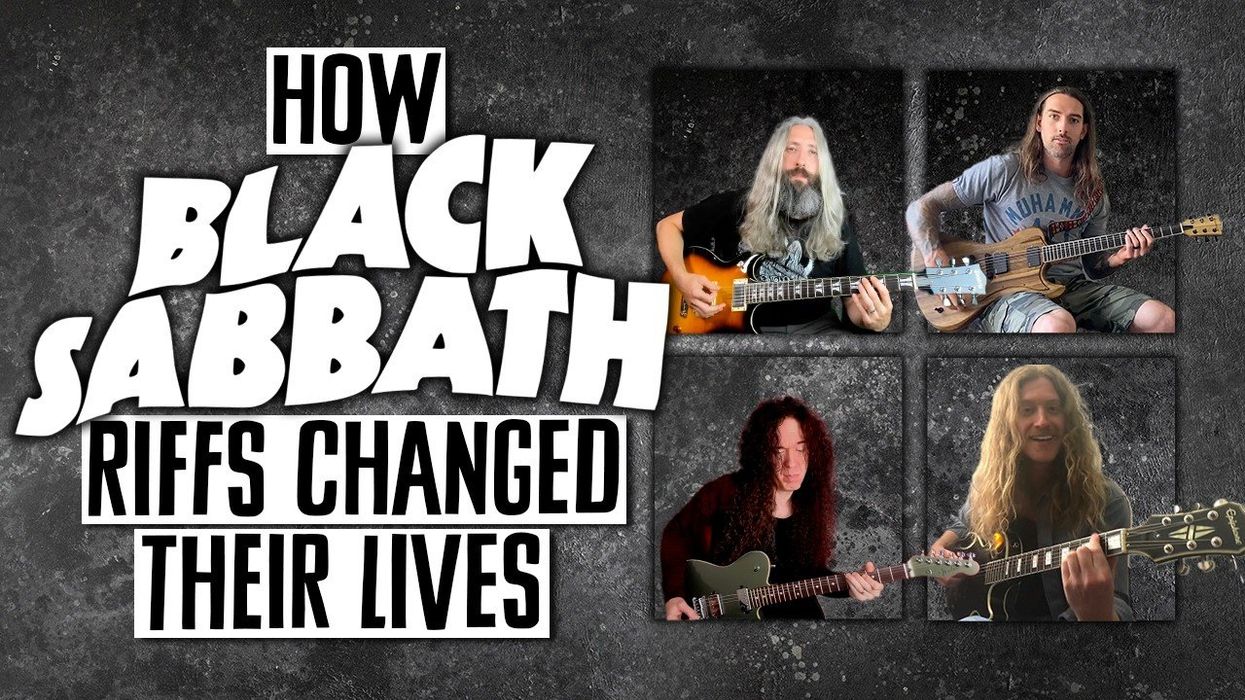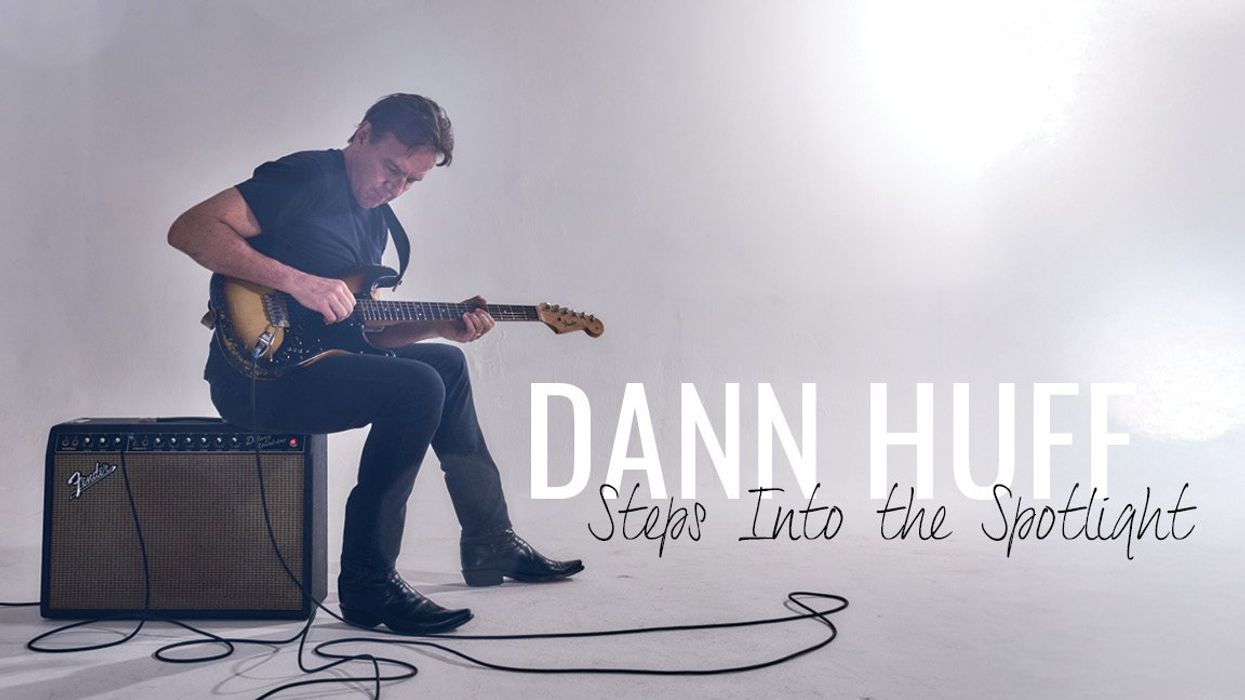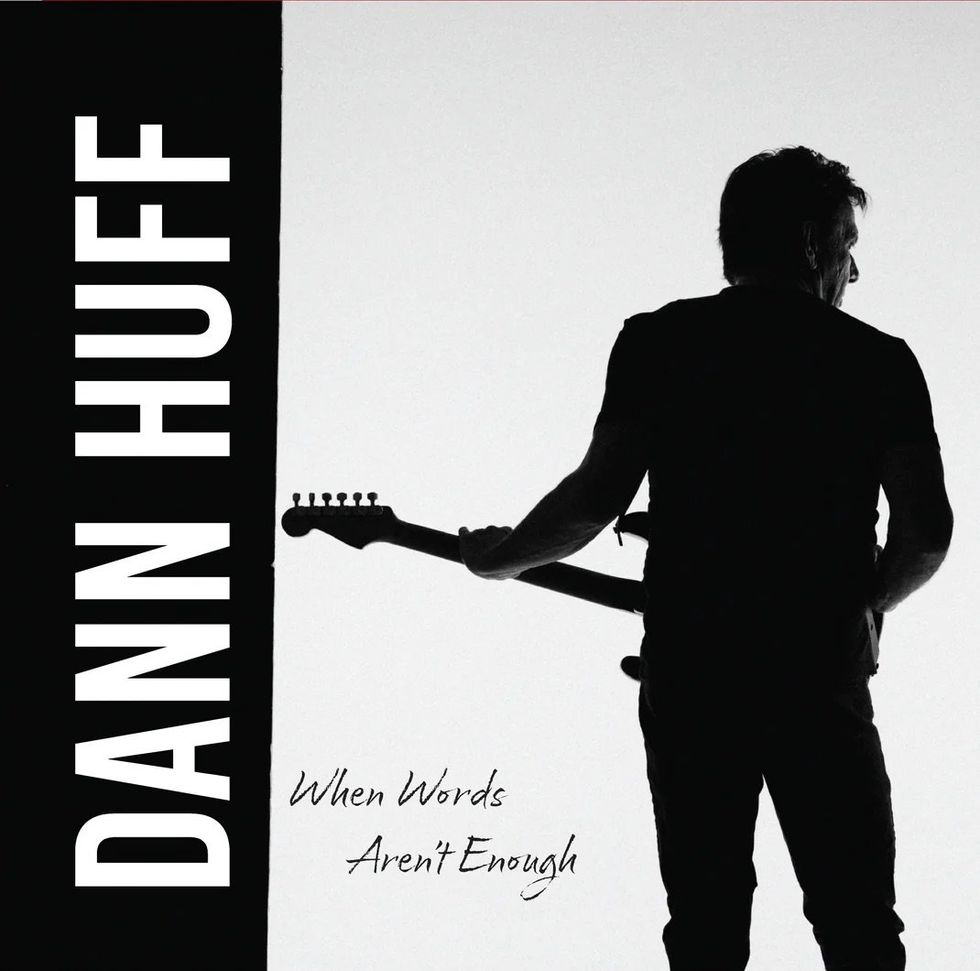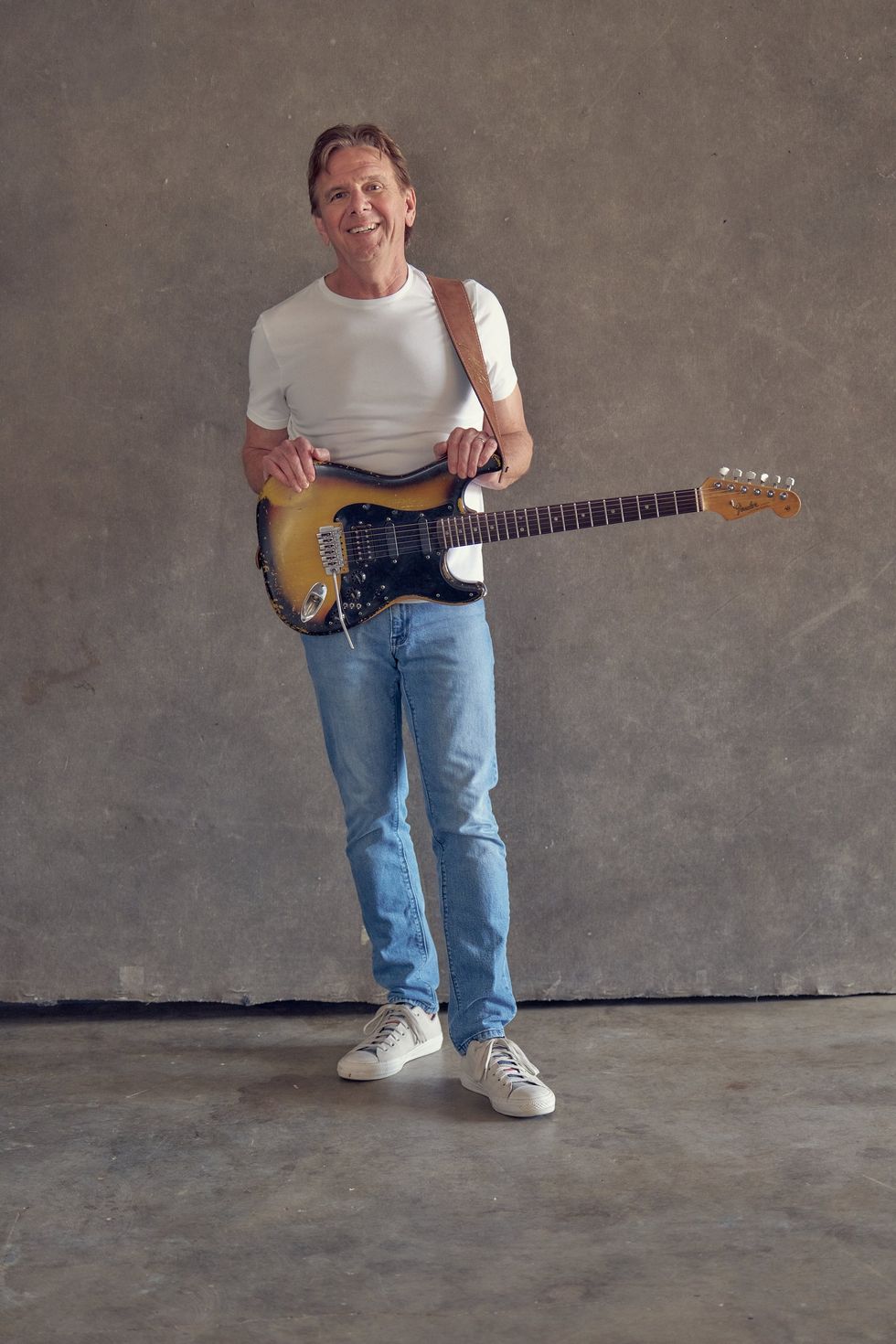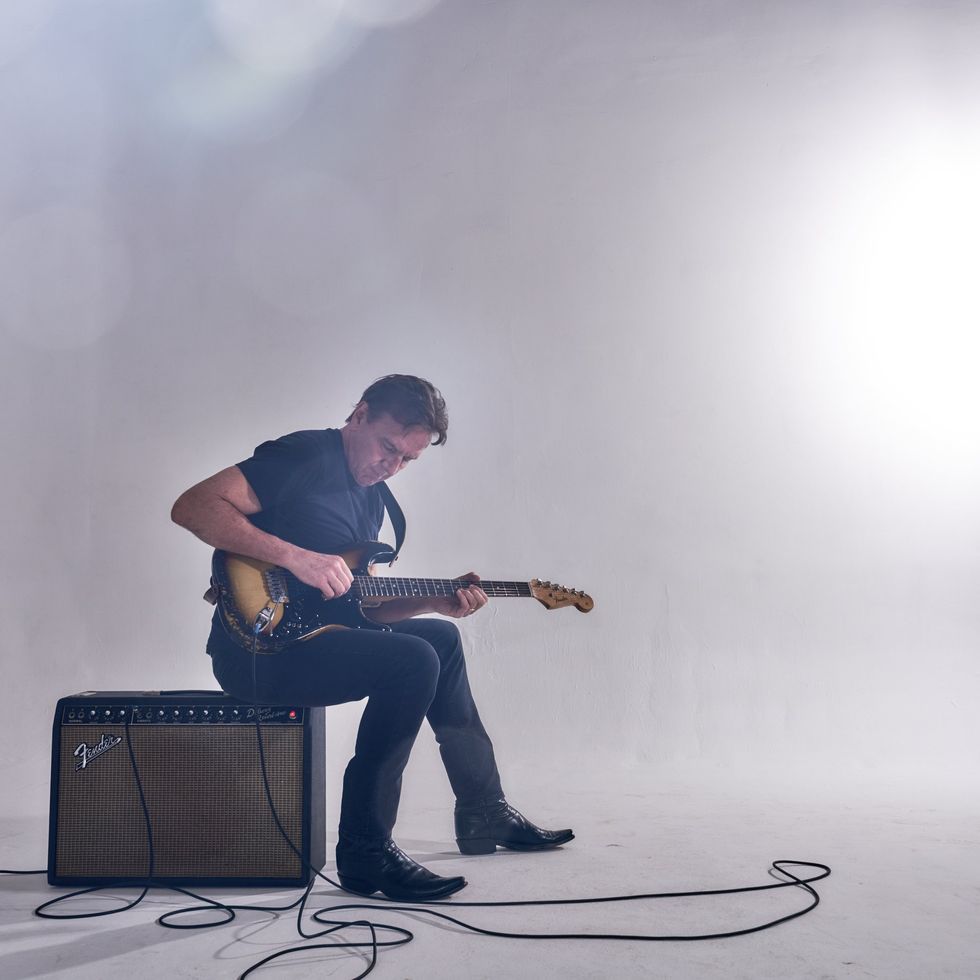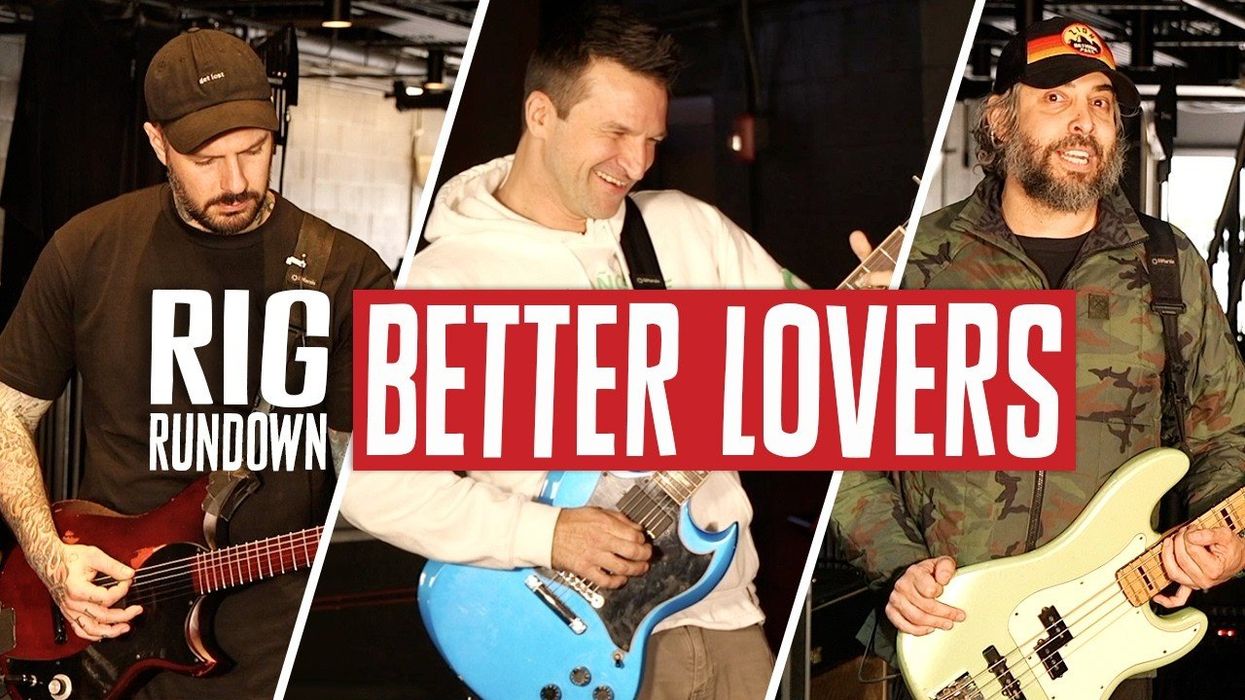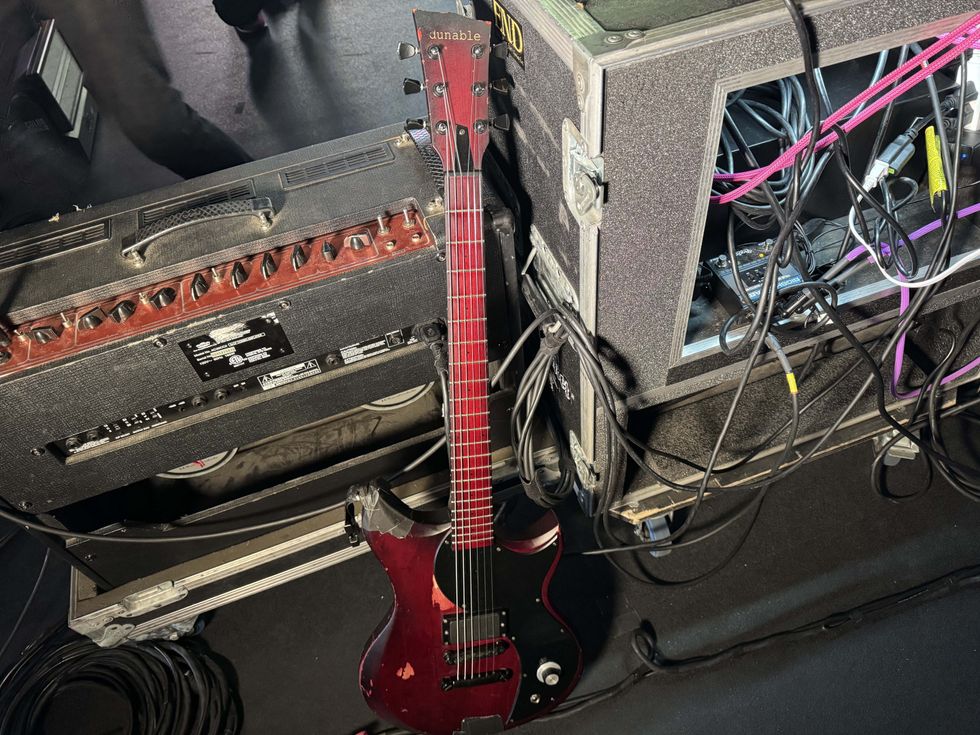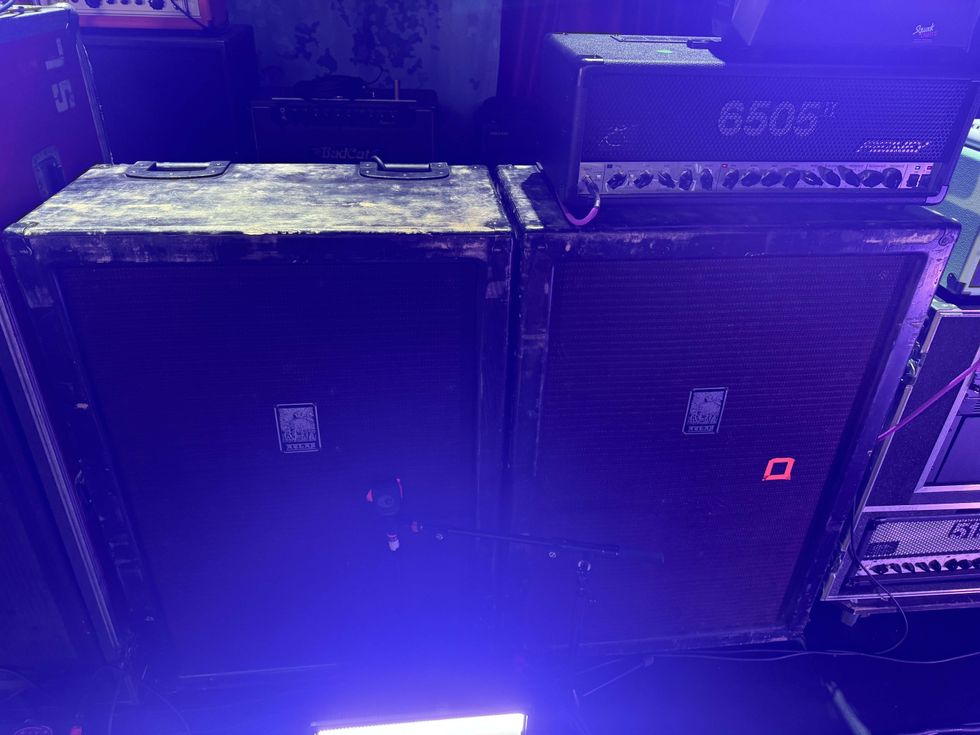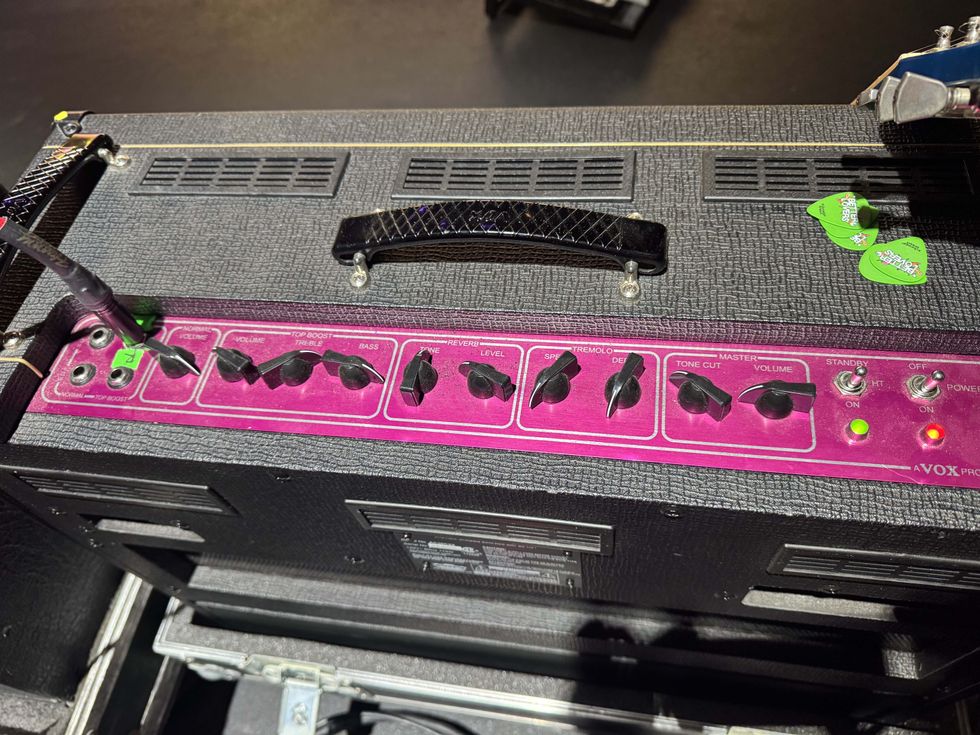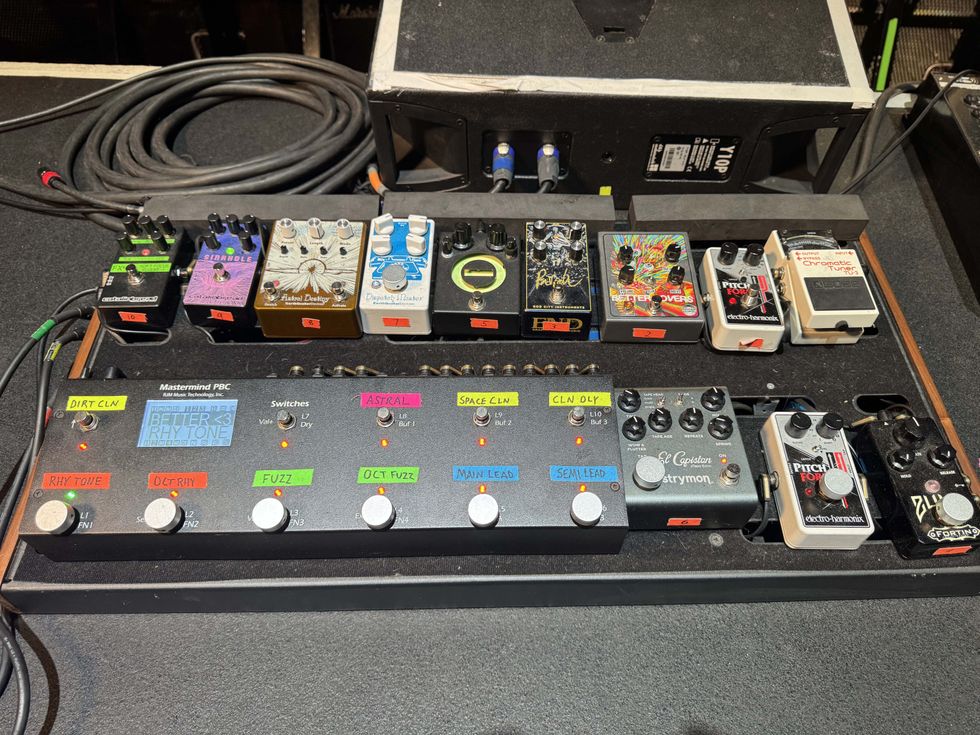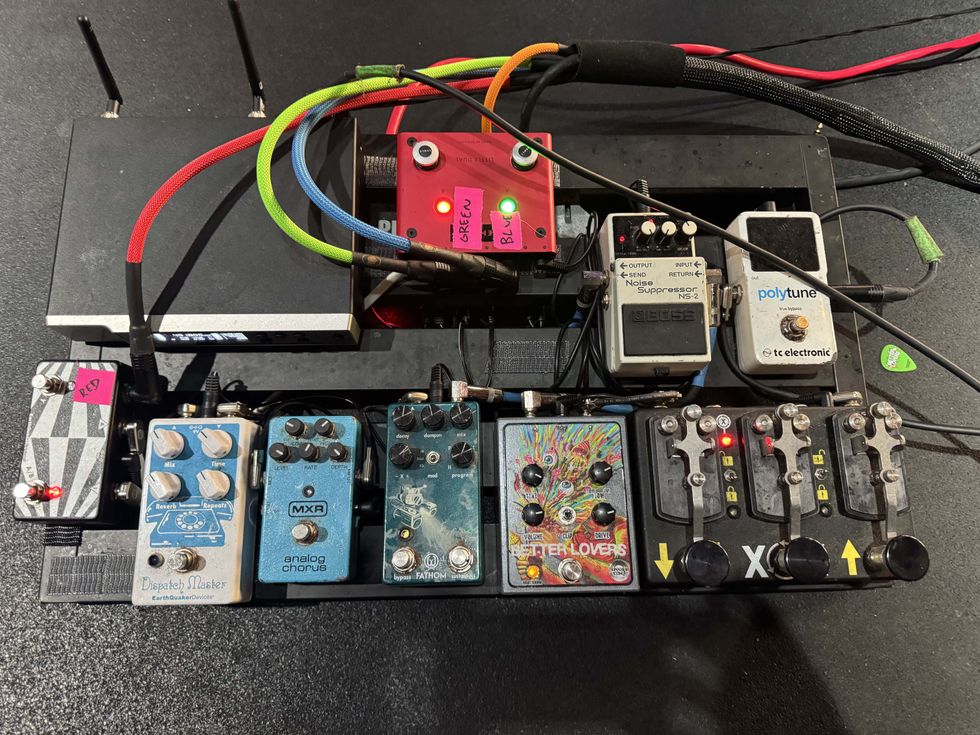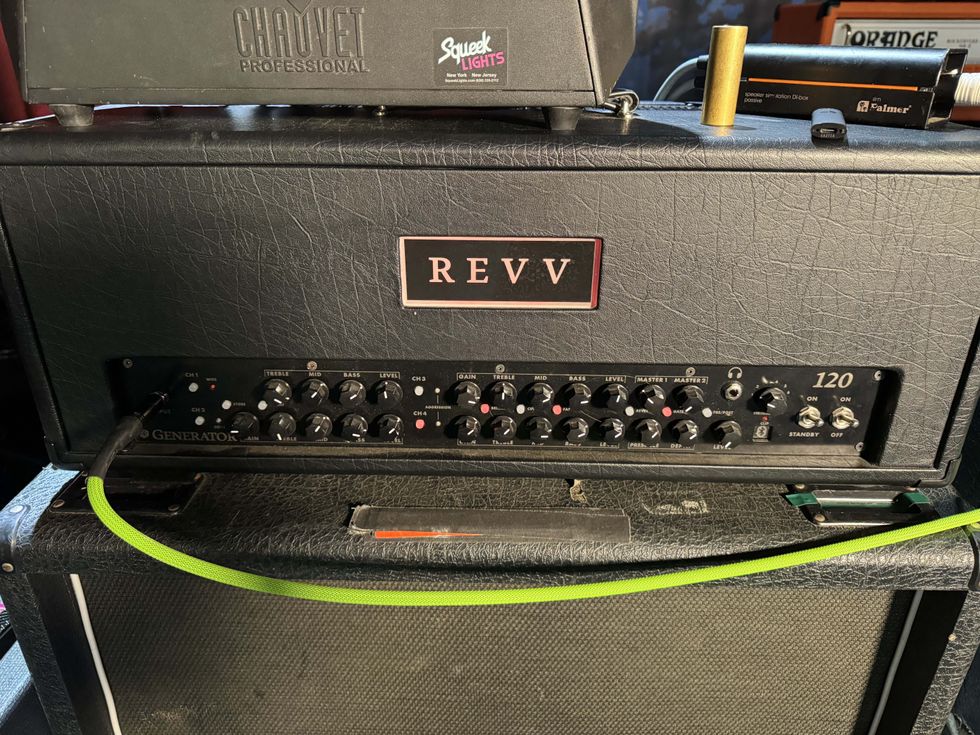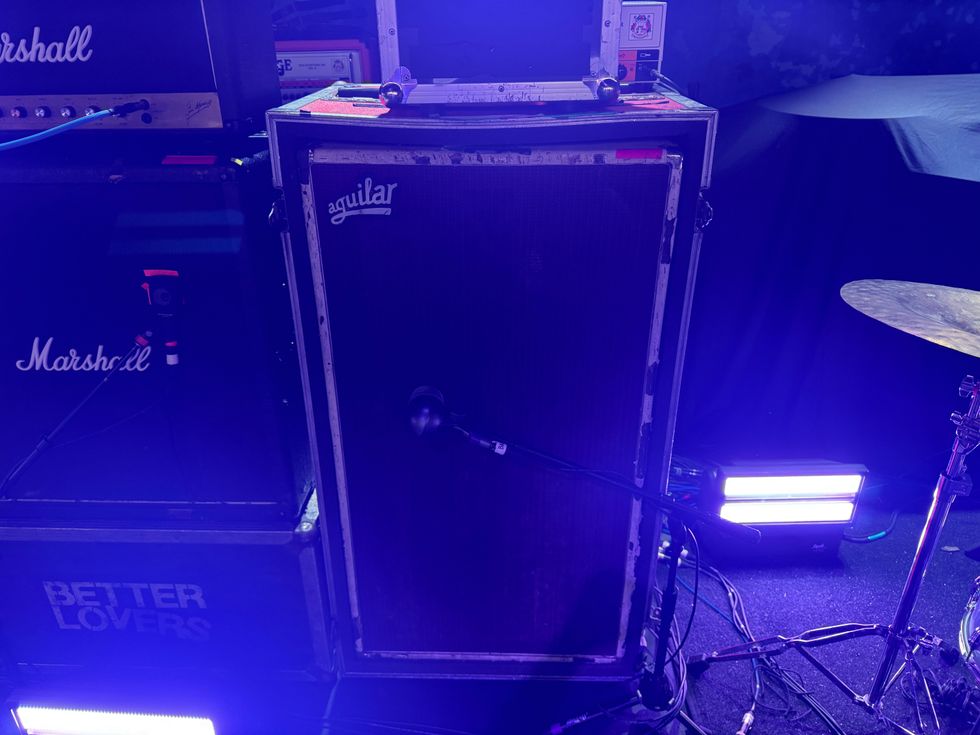When we caught up with Crobot’s Chris Bishop, it was just a few days until the band joined Volbeat and Airbourne on a European tour in Germany, the Netherlands, and the U.K., playing in front of 20,000 people each night. It’s the lifestyle many aspiring musicians dream of: visiting foreign cities, playing original music for thousands of adoring fans, opening for your friends and heroes. But at the time of this interview, Bishop was in Pottsville, Pennsylvania, waiting for his next client.
“We tour a lot, but I also tattoo in all the free time that I have,” says Bishop, referring to the parallel careers he’s nurtured over the years. Bishop seems happy to have a flexible side gig as a tattoo artist, but his situation reflects the current state of the music industry. The offstage life of today’s rock star is quite different than it was back in the halcyon days of Led Zeppelin, Deep Purple, and the like. “Crobot’s gotten a lot bigger, but it’s not like we’re making shitloads of money—not enough to live comfortably,” Bishop admits. “Tattooing and touring sort of go hand in hand: The bigger the band gets, the more fans there are who want tattoos.”
Bishop is obviously a realist and his character, both as a player and person, is etched from acknowledging, and dealing with, these kinds of compromises. When he was 8 years old, living in Kingsport, Tennessee, he saw Alan Jackson play “Chattahoochee” on TV and was immediately hooked on guitar. His family was dirt poor, so he had to convince his mom to buy him one. “It was the honkiest riff,” he says, recalling the Jackson tune. “But I thought it was cool. I begged my mom for the longest time to buy me a guitar after hearing that.” His family was poor, but his mom managed to save up enough money for a cheap Alvarez acoustic. But the guitar was not provided unconditionally. “She put me in guitar lessons once a week for a half hour and made me practice at least 15 minutes a day for that first year,” he recalls. “For a 9 or 10-year-old kid, it was tough. I was like, ‘I want to play baseball.’ But my mom insisted I do that until I actually started enjoying it.”
The rigor his mother instilled in him paid off and he soon advanced to absorbing classic songs by the Beatles, Led Zeppelin, AC/DC, and others. He also participated in impromptu jams with his dad’s cousin Grover, which expedited the learning process. “He and his friends used to sit around playing Lynyrd Skynyrd songs and I would join in—that’s how I learned to play.”
Bishop formed Crobot in the summer of 2011 with singer Brandon Yeagley. They played locally for about a year before solidifying their current lineup, with Jake and Paul Figueroa on bass and drums. Something Supernatural was released in 2014 and Crobot began building their fanbase the good old-fashioned way: via incessant touring with the likes of fellow road dogs Clutch, the Sword and, more recently, Anthrax and Volbeat. They refer to their music as “dirty groove rock,” an apt description for a band that relies heavily on some of rock’s guiltiest pleasures: simple but serpentine guitar riffs, solid drum grooves, sinewy bass lines, and big choruses delivered by an old-school leading man.
Crobot’s latest, Welcome to Fat City, is a raucous album built on these simple building blocks. On guitar, Bishop weaves together indelible patterns and pictures that aren’t unlike his artistry as a tattooist. On “Blood on the Snow,” he’s a rock guitarist with a funk player’s knack for rhythm. On “Right Between the Eyes” he peppers the solo with effects tastefully, never once sacrificing the pace or the performance. On “Plague of the Mammoths,” he demonstrates the singular power of simplicity with a repetitive riff that morphs and evolves. And on the uber-heavy Black Sabbath-like swing of “Hold on for Dear Life,” he lays down a tasty, subdued solo that channels his biggest influence. Bishop is clearly adept at crafting a unified vision from contrasting styles, ideas and techniques that, in many ways, defines Crobot’s sound. When PG caught up with him at the tattoo parlor, he was more than happy to talk about his guitar approach, his all-time favorite solos, and why simple riffs rule.
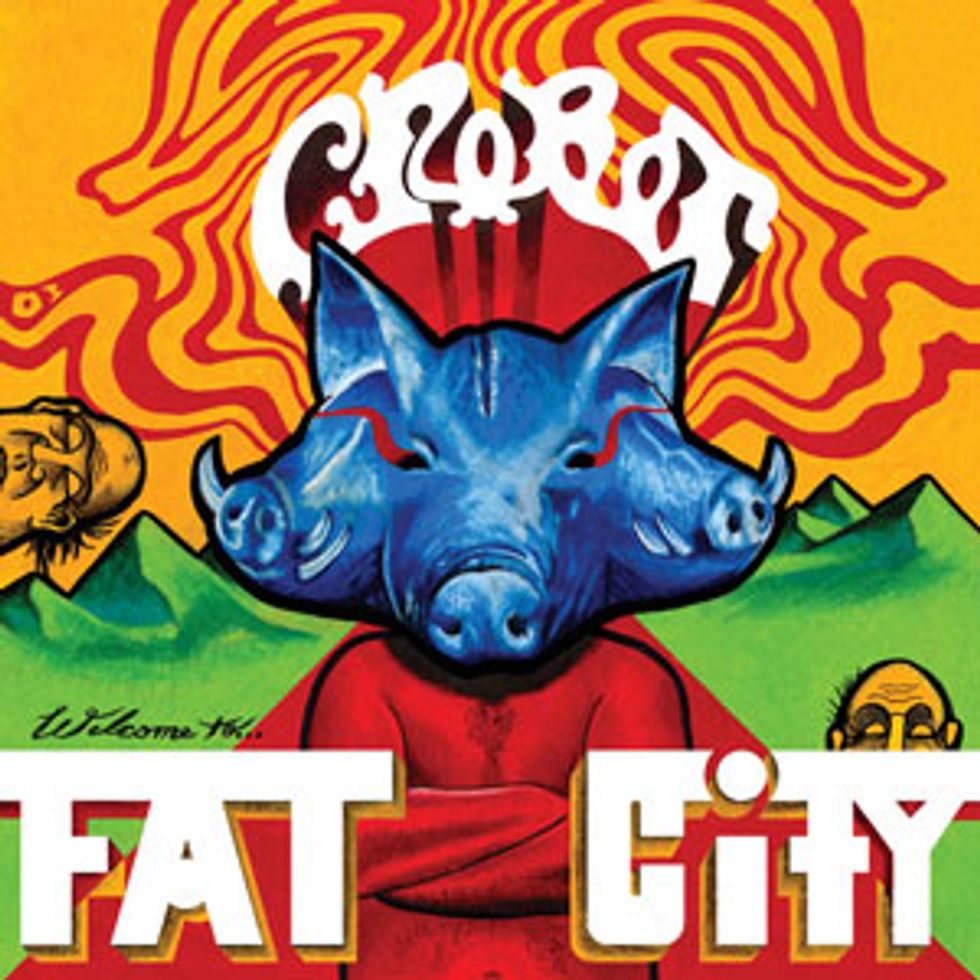
Crobot's sophomore album, Welcome to Fat City, can be streamed here.
Who are some of your influences?
Audley Freed from Cry of Love is my favorite guitar player. [Editor's note: Freed’s since gone on to play with the Black Crowes, Sheryl Crow, Peter Frampton, and others.] I remember hearing “Too Cold in the Winter” (Brother, 1993) on the radio, and my mom and I loved that song, so we ended up getting that first album and listened to it front to back. I forgot about Cry of Love and then rediscovered them about 10 years ago and I was like, “I can’t believe how similar my playing is to Audley Freed.” Don’t get me wrong, he is leaps and bounds better than me, but I hear some of the inflections that influenced me in those formative years of playing guitar. He’s my number one. I just love his chicken pickin’, his dynamics, how Hendrix-y he can be with that Strat/Marshall sound. The way he plays his chord inversions is phenomenal.
I definitely hear Freed’s influence in your playing—especially on the slow blues improv stuff that you do live.
I play a lot with my fingers and I just blatantly try to rip off some of his solos because I love them so much.
Do you play mostly with your fingers?
I do. Especially in the past five years. When I’m home or just playing before shows I never play with a pick, and that’s opened a lot of doors for me dynamically. It’s made me a better player all around. And I’ve always enjoyed country bands and chicken pickin’ for the feel. Incorporating that into Crobot is definitely tough to do, but it also has its place.
“Moment of Truth” sounds like a good example of that technique.
I’m freed up to do a lot of that in “Moment of Truth,” because it’s a more traditional blues. At the end [of the song] it’s like this outro, barebones, quick-solo kind of thing. I’m playing that all with my fingers. It’s all legato, chicken-pickin’.
Crobot’s guitarist, Chris Bishop, calls himself a “groove guitar player.” The band plays a half-step down in Hendrix tuning, and sometimes dropped C#. Photo by Michael Frey
What was your learning curve like in your formative years?
I got really good really quick when I was really young. I remember going to music stores where I’d sit around and play Zeppelin solos note-for-note. I’d have crowds of people watching me play and I thought that was the coolest. And then I leveled off and I didn’t get any better until I was like 20 years old, which is pretty funny.
Do you think times have changed in terms of learning to play guitar?
If I was growing up with the resources kids have now, I feel like I would be the best guitar player in the world. YouTube is unreal. You have access to all these songs and to learn all this theory that, when I was growing up, we didn’t have.
One of the things that struck me immediately about Crobot’s music is the healthy relationship between bass and guitar. There’s dynamic interplay, rather than the bass simply supporting the guitar.
I think it’s just one of those things where Jake [Figueroa, bass] and I both write strong riffs, and those riffs just end up taking the direction of the song. We’re a riff-rock band and there’s something really powerful about keeping it simple, even when you can obviously overcomplicate it. To keep it three notes or two notes or one note and slam it with the drums is so much more powerful a lot of the time.
It’s cool how you guys toy with and manipulate riffs.
Some of my favorite riffs are simple, simple riffs that are written very creatively. That says more about your guitar playing and songwriting than just shredding up a crazy solo. If you can play the same riff the whole song, but put a spin on with just some sort of crazy drum beat and flip it on its head, that’s cool. It’s a very Queens of the Stone Age way to go about it.
You have a strong rhythmic sense to your guitar playing—even funky. How important is that to your style?
The way to describe my guitar playing is that I’m a groove guitar player. I do a lot of matching with the drums, almost like a bass player, and even when I’m not playing notes, like if there’s a verse where I’m just sort of chilling out, I’m always muting on strum patterns with Paul [Figueroa, drums]. The groove is the most important thing in the song and, being the only guitar player, my main focus is to make sure that’s there.
You incorporate some cool effects that pop in and out, creating a nice bit of tension in the song arrangements. “Welcome to Fat City,” right before the lyric “there’s no such thing as greed,” is a great example.
That’s become one of my signature things. I started doing it at the beginning of Crobot. I was doing it to build tension between parts and it just became one of those things that everyone would always ask me about, so I kept pushing it. That part is a delay pedal.
Chris Bishop’s Gear
GuitarsFender Stratocaster
Fender 60th Anniversary American Standard Telecaster
Fender FSR ’72 Telecaster Custom P90
(all guitars modded by Dan Stang)
Amps
Orange Tiny Terror head
Orange Dual Terror head
Orange Crush Pro 4x12 cabs
Effects
Vox Joe Satriani Time Machine Delay
Ibanez AF2 Paul Gilbert Airplane Flanger
Ibanez ES2 Echo Shifter Analog Delay
Empress Tape Delay
EarthQuaker Devices Hoof Reaper Dual Fuzz
EarthQuaker Devices Tentacle Analog Octave Up
Electro-Harmonix Micro POG Polyphonic Octave Generator
Strings and Picks
DR Strings Dimebag Darrell DBG-9/50 Signature Hi-Voltage Electric Guitar Strings
Dunlop Tortex .88 mm green picks
I have the feedback and level all the way up and there’s a knob to warp
it down really slow or warp it really fast. It’s a four-quadrant knob, so you can
get a really harsh warp. It’s a Vox Time Machine. It’s broken and doesn’t have a tap on it anymore.
“Easy Money” sounds like an effect on the intro.
That’s an octave thing that starts on the 12th fret. I’m plucking that with my fingers. It does sound like an analog high-octave effect, but it’s only the neck pickup of the Tele.
What’s your philosophy on employing effects to enhance the music?
It always comes back to being able to do it live. If you can make your live experience unique, and if you can do that with your performance, then that’s the ultimate. It ties back into being a groove guitar player.
Do you have a secret weapon?
I have a cool, crappy Ibanez Airplane Flanger
[Paul Gilbert Signature]. It’s the cheesiest pedal in the world, but I used it a lot on the record, like on “Hold on for Dear Life,” in the bridge, there’s this Bozo-the-Clown-sounding, flanger-like dive-bomb—that’s that pedal.
Do you ever experiment with alternate tunings?
We’re a half-step down, the Hendrix tuning. Sometimes we’ll go dropped C# from there. We did some stuff with open tuning for a couple of different slide songs when we were writing and recording, but they didn’t make the record. I wrote an acoustic song in open D with the high E to a D as well, like “Bron-Y-Aur Stomp” by Led Zep, that tuning, but that song didn’t make the album either.
Right now, I’m working on a side project with my buddy in ÆGES, Kemble Walters, their singer. They tune their E string to low A, so it’s A–A–D–G–B–E. I’ve been messing around with that with him, but I’m a half-step down so it’s G#, which is ridiculously low.
What is Crobot’s writing process like?
Everyone comes in with riffs or parts and we’ll jam it from there and see where it takes us. Sometimes we’ll jam it and forget about it, then listen back to an open-room recording of it and say, “What was that?!?!” and we’ll work on it some more.
YouTube It
Check out Crobot’s performance from the 2016 International Lille Tattoo Convention to get a taste of Chris Bishop’s finger-lickin’ chicken pickin’—and lots more—in this hour-long set.
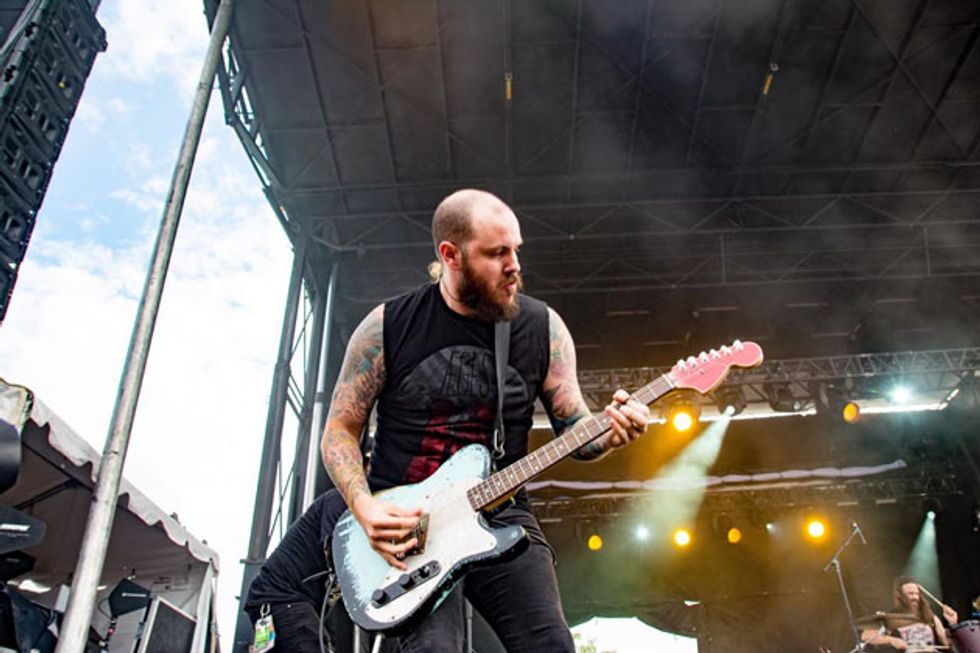
Chris Bishop plays a Fender Strat and this 60th Anniversary American Standard Telecaster, all modded by Dan Stang. “He made this crazy noise button that I put in all my guitars,” says Bishop. “It creates a hum that can be controlled by
a wah pedal or, if you put fuzz on it, it creates a different frequency hum.” Photo by Michael Frey
Do you guys write when you’re on the road?
Personally, I do a lot of the riff writing on the road, because we’re on the road a lot, especially recently. With Anthrax and Volbeat it was an arena tour so we had accommodations that allowed us the room to write—we could run through songs in the green room. It’s one thing that you have to stay on top of while you’re on tour—make sure you’re writing. My voice memo at any given time is just full of new riffs that are just waiting to be jammed with the band.
What was it like to have Machine producing again?
He became one of our buddies. He pushes Crobot into the right direction—more funk, more groove, more riffs. When it was time to do this last record, we didn’t want to seek out and get comfortable with another producer. We already had that comfortability with him from the first record and, because of that, I feel we made a stronger, better record. We approached things differently with writing and tone.
What did you do differently?
With this album, we only did one guitar performance and we didn’t layer things. We had an Orange OR100 and a Laney Lionheart, the tweed-front vintage ones. It’s very Fender-sounding with a nice spring reverb. We ran them both simultaneously with a 20-millisecond delay on one side and it just created this huge awesome sound. We created a giant guitar sound by having one performance—you retain all the inflections of the playing as opposed to layering and layering and losing that. I was really happy.
I guess you won’t have any trouble playing this material live then, will you?
All the crazy stuff that sounds like it would be overdubbed is how I play it live. Very rarely do we overdub stuff. Like, maybe I’ll overdub a crazy fuzz on a riff or something, but other than that it’s very minimal.
Tell me about your guitars. They have some unique mods to them from what I understand.
Right now, I’m playing a Strat. I have a guy who builds crazy shit for me. His name is Dan Stang. He’s a phenomenal guy who techs and builds and hand-winds pickups for me. He made this crazy noise button that I put in all my guitars. He basically just stumbled on it because he was trying to make me a switch for one of my guitars and he messed it up. What it does is, it creates a hum that can be controlled by a wah pedal or, if you put fuzz on it, it creates a different frequency hum. You can hear it on “Hold on for Dear Life” in those big breaks where there’s weird, crazy feedback. That’s the noise button. It’s also in “Easy Money”–that siren sound between the first verse and pre-chorus, and “Play it Cool.” I’m always trying to find weird new sounds.
Have you ever thought about taking your tattoo business on the road with you?
It’s funny you should say that. We just did a tour with Sevendust and I ended up doing a tattoo for LJ [Lajon Witherspoon, vocalist] on his birthday and then tattooed a big cover-up on Clint [Lowery], the guitar player. It was awesome. I grew up a Sevendust fan and now I’m hanging out and tattooing these dudes. I also got to tattoo over in Wales. When we were touring in Europe I stayed an extra week and tattooed fans of the band. It’s opened a lot of doors.
Does tattooing influence your music in some way?
It’s sort of a bonding thing. It’s one of my favorite things—to be able to give other musicians that I respect tattoos that they’ll remember.
Chris Bishop’s Top 5 Favorite Guitar Solos
1. “Sunday Morning Flood” (Diamonds & Debris, 1997) by Cry of Love with Audley Freed on guitar. “‘Sunday Morning Flood’ is one of my favorites. It’s got this giant, slow blues break. The dynamics are just phenomenal.”
2. “Heartbreaker” (Led Zeppelin II, 1969) by Led Zeppelin with Jimmy Page on guitar. “I’ve always loved Jimmy Page’s solo in ‘Heartbreaker’ and how the song does a complete 180. And he’s got that really cool bend that he does behind the nut.”
3. “Who Knows” (Band of Gypsys, 1970) by Jimi Hendrix. “The solo, when the dynamics drop out and come back in … it’s one of my favorites.”
4. “Firebirds” (Psychic Warfare, 2015) by Clutch with Tim Sult on guitar. “His solos are so minimal, but so well-written and groove-oriented. “Firebirds” is very simple, but it’s so great because it’s got a weird key change and he’s playing these weird notes—it’s such a minimalistic solo.”
5. “Freedom” (Rage Against the Machine, 1992) by Rage Against the Machine with Tom Morello on guitar. “‘Freedom’ is such an awesome, melodic solo. It’s not just the noises and stuff that he usually does—he’s actually playing and it’s really good. And it’s such a good build into the riff that comes next; it’s the perfect setup for the end riff.”


